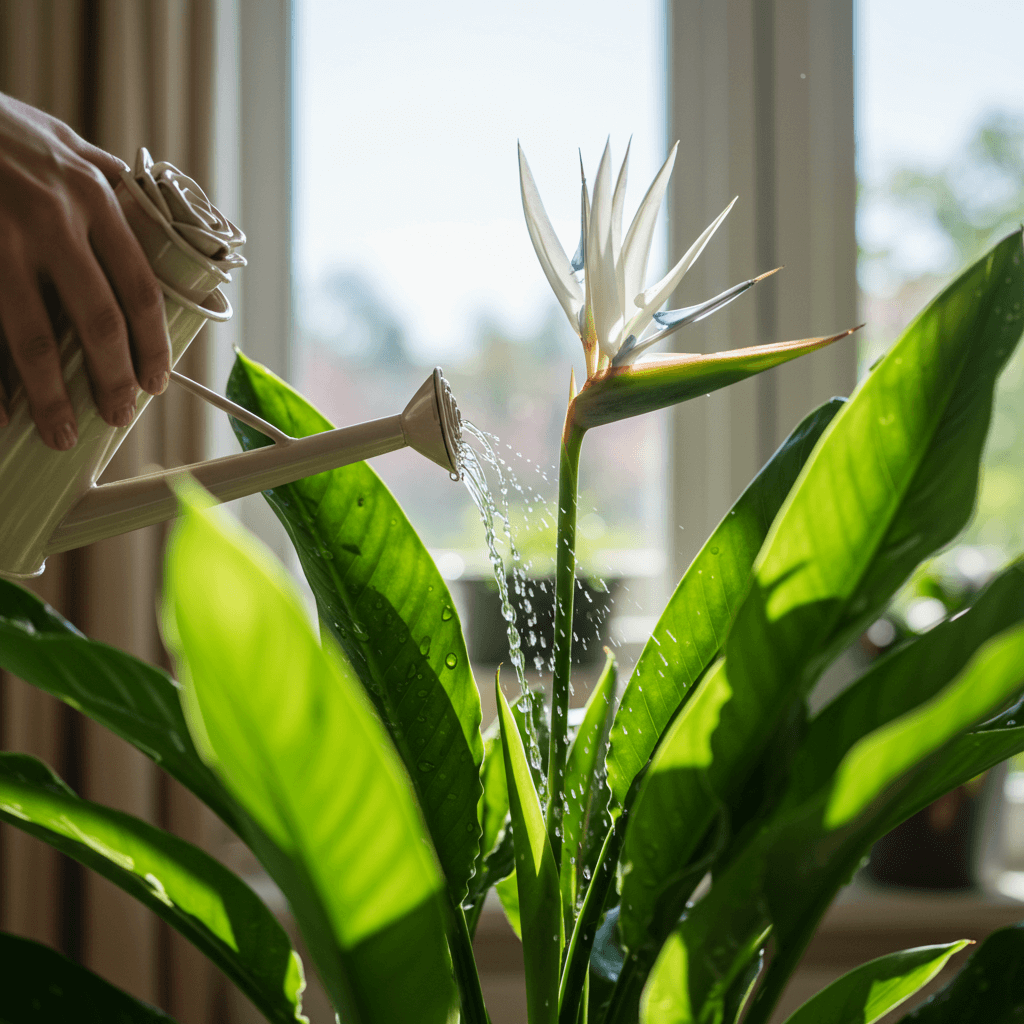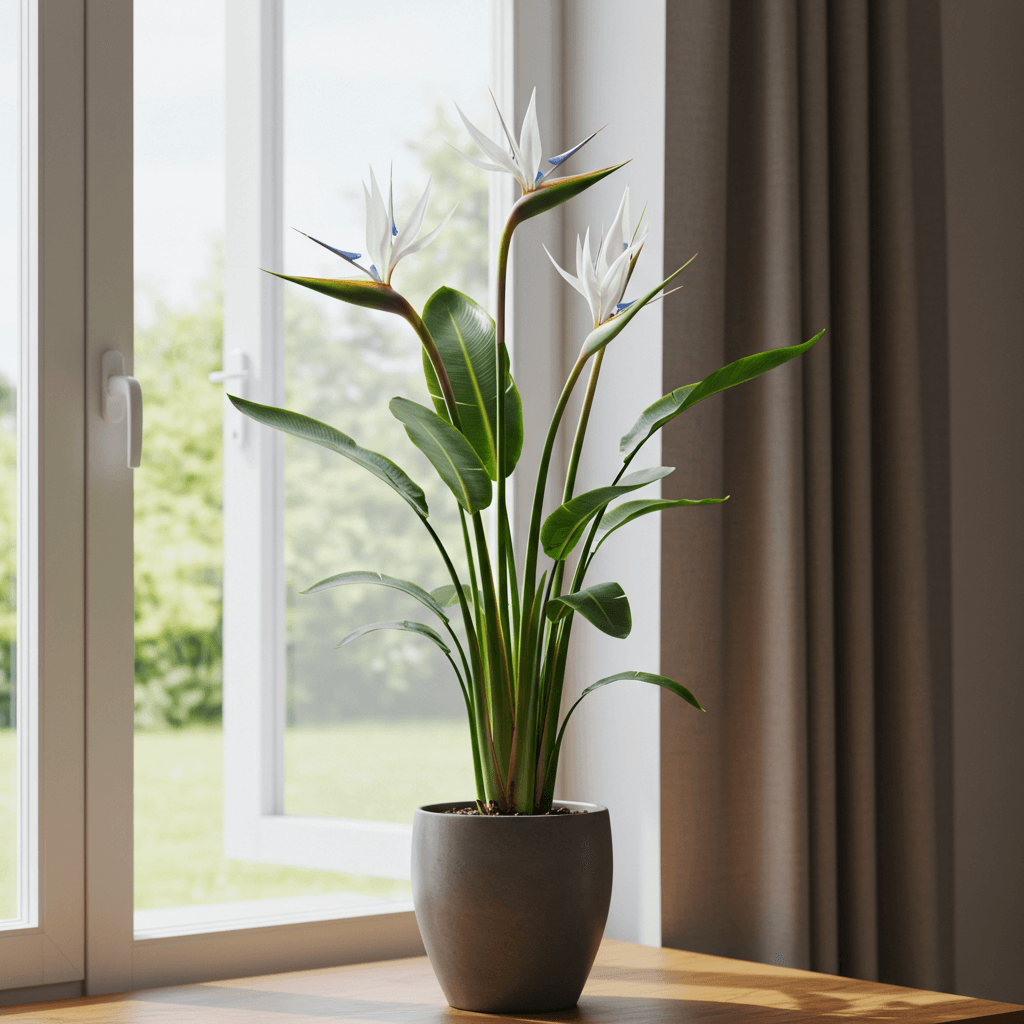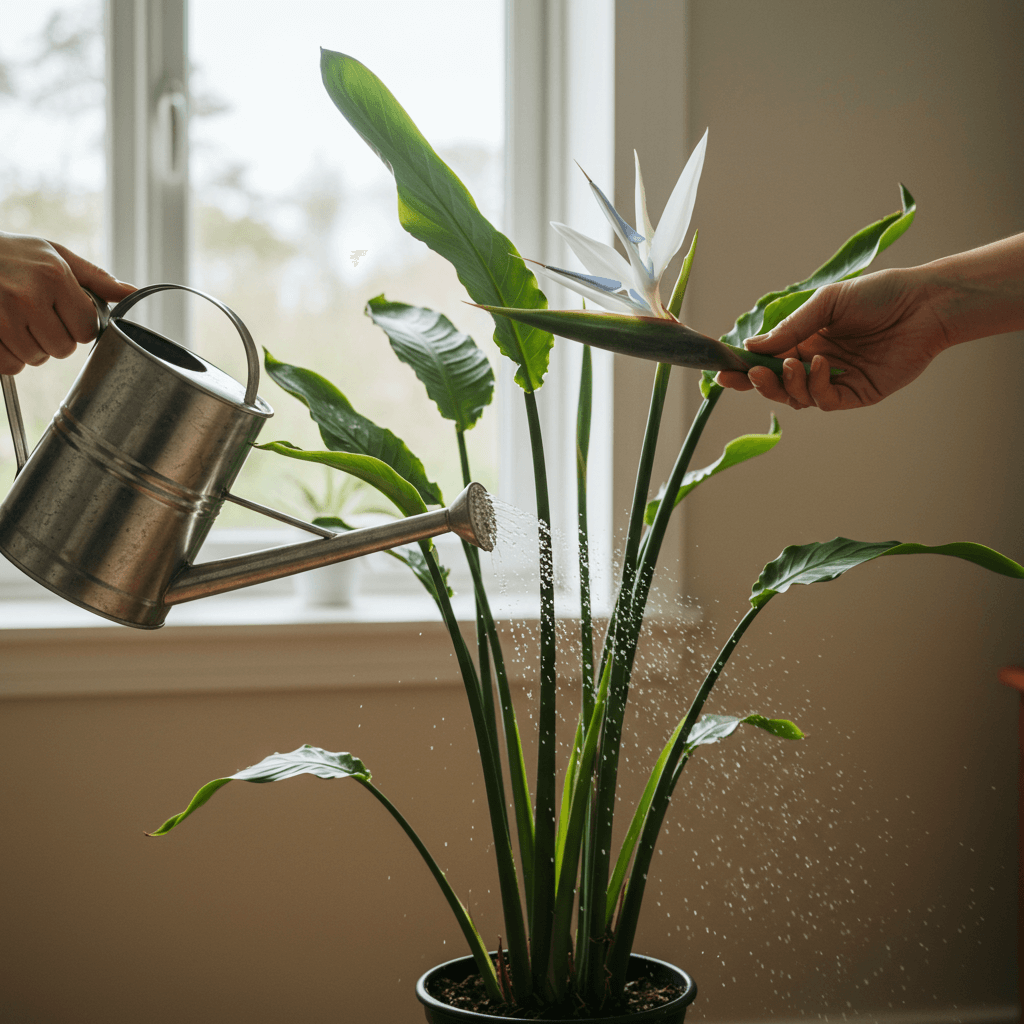Mastering White Bird of Paradise care indoor is essential for keeping this stunning tropical plant healthy and vibrant. The White Bird of Paradise (Strelitzia nicolai), with its large, glossy leaves and dramatic presence, can turn any indoor space into a lush, exotic retreat. While it’s a favorite among houseplant lovers, its care requires specific attention to light, watering, and humidity. In this guide, we’ll walk you through everything you need to know to ensure your White Bird of Paradise thrives indoors. Whether you’re new to plant care or an experienced enthusiast, these tips will help you avoid common pitfalls and keep your plant flourishing.
Introduction to White Bird of Paradise Care Indoor
What is a White Bird of Paradise?
The White Bird of Paradise is a tropical plant native to South Africa. It’s part of the Strelitziaceae family and is closely related to the more commonly known Bird of Paradise (Strelitzia reginae). While the latter is famous for its vibrant orange and blue flowers, the White Bird of Paradise is prized for its dramatic foliage. Indoors, it can grow up to 6 feet tall, making it a stunning focal point in any room.
Why is it a Popular Indoor Plant?
This plant is beloved for its ability to purify the air and add a tropical vibe to indoor spaces. Its large, banana-like leaves create a bold, architectural look that complements modern and bohemian decor alike. Plus, it’s relatively low-maintenance compared to other tropical plants, making it a great choice for both beginners and experienced plant owners.
Key Factors for Indoor Success
To keep your White Bird of Paradise healthy, you’ll need to focus on four main care aspects: watering, light, humidity, and maintenance. Let’s dive into each of these in detail.
Watering Your White Bird of Paradise
How Often to Water
White Bird of Paradise plants prefer consistently moist soil but don’t like to sit in water. During the growing season (spring and summer), water your plant once a week. In the winter, reduce watering to every 10-14 days, allowing the top 2 inches of soil to dry out between waterings. Overwatering is one of the most common mistakes plant owners make, so it’s important to strike the right balance.
Signs of Overwatering and Underwatering
- Overwatering: Yellow leaves, root rot, and a musty smell from the soil. If you notice these signs, reduce watering and ensure your pot has proper drainage.
- Underwatering: Dry, crispy leaf edges and drooping leaves. If your plant looks thirsty, increase watering frequency and check the soil moisture regularly.
Best Watering Practices
Use a well-draining potting mix and ensure your pot has drainage holes to prevent waterlogging. Water thoroughly until water drains out of the bottom, then empty the saucer to avoid root rot. If you’re unsure whether your plant needs water, stick your finger into the soil. If the top 2 inches feel dry, it’s time to water.
Read More :
Light Requirements for Healthy Growth in White Bird of Paradise Care Indoor
Ideal Light Conditions
White Bird of Paradise plants thrive in bright, indirect light. Place your plant near a south- or east-facing window where it can receive plenty of sunlight without being exposed to harsh, direct rays. If your plant gets too much direct sunlight, its leaves may develop brown, scorched tips.
Supplementing with Grow Lights
If your home doesn’t get enough natural light, consider using a grow light to provide the necessary brightness. Position the light 12-18 inches above the plant and keep it on for 10-12 hours a day. This is especially helpful during the winter months when daylight hours are shorter.
Signs of Too Much or Too Little Light
- Too Much Light: Brown, scorched leaf tips. If you notice this, move your plant further away from the window or use a sheer curtain to filter the light.
- Too Little Light: Leggy growth and smaller leaves. If your plant isn’t getting enough light, consider moving it to a brighter spot or using a grow light.
Maintaining Your White Bird of Paradise Care Indoor

Pruning and Cleaning Leaves for White Bird of Paradise Care Indoor
Regularly prune dead or yellowing leaves to encourage new growth and maintain the health of your White Bird of Paradise. Use clean, sharp pruning shears to avoid damaging the plant. Wipe the leaves with a damp cloth to remove dust, which can block sunlight and reduce the plant’s ability to photosynthesize—a crucial part of White Bird of Paradise care indoors. Clean leaves also help prevent pest infestations, ensuring your plant stays vibrant and thriving in its indoor environment.
Repotting Tips
Repot your White Bird of Paradise every 2-3 years or when it becomes root-bound. Choose a pot that’s 2-3 inches larger in diameter and use a well-draining soil mix. Spring is the best time for repotting, as the plant is entering its active growing season. When repotting, gently loosen the roots and remove any dead or rotting ones before placing the plant in its new pot.
Fertilizing Schedule
Feed your plant with a balanced liquid fertilizer every 4-6 weeks during the growing season. Avoid fertilizing in the winter when the plant’s growth slows down. Over-fertilizing can lead to salt buildup in the soil, which can harm the plant. If you notice white crust on the soil surface, flush the soil with water to remove excess salts.
Troubleshooting Common Problems in White Bird of Paradise Care Indoor
Yellow Leaves and Brown Tips
Yellow leaves are often caused by overwatering, while brown tips can result from low humidity or too much direct sunlight. Adjust your watering schedule and consider using a humidifier to increase moisture levels. If the air in your home is dry, you can also mist the leaves occasionally or place a tray of water near the plant.
Pest Control
Watch out for common pests like spider mites and mealybugs. These pests can cause damage to the leaves and stunt the plant’s growth. If you notice pests, wipe the leaves with a mixture of water and mild soap or use neem oil as a natural treatment. Regularly inspecting your plant for pests is key to preventing infestations.
Humidity and Temperature Tips
White Bird of Paradise plants prefer high humidity (around 60%) and temperatures between 65-80°F. If your home is dry, use a humidifier or place a tray of water near the plant to boost humidity. Avoid placing your plant near drafts, air conditioners, or heaters, as sudden temperature changes can stress the plant.
Advanced Tips for Thriving White Bird of Paradise Plant Care Indoor Secrets

Encouraging Growth
If you want your White Bird of Paradise to grow taller and fuller, make sure it’s getting enough light and nutrients. Rotate the plant every few weeks to ensure even growth on all sides. You can also use a stake to support the plant as it grows taller.
Dealing with Leggy Growth
If your plant starts to look leggy (long stems with sparse leaves), it may not be getting enough light. Move it to a brighter spot or supplement with a grow light. Pruning can also help encourage bushier growth.
Seasonal Care Adjustments
- Spring and Summer: This is the plant’s active growing season. Increase watering and fertilizing to support new growth.
- Fall and Winter: Growth slows down during this time. Reduce watering and stop fertilizing until spring.
For more detailed tips on caring for your White Bird of Paradise intdoor, check out this comprehensive guide
Conclusion
Caring for a White Bird of Paradise indoors doesn’t have to be complicated. By following these tips on watering, light, and maintenance, you can enjoy a healthy, thriving plant that adds a tropical touch to your home. Remember to monitor your plant’s needs and adjust your care routine as necessary. With a little attention and care, your White Bird of Paradise will reward you with lush, vibrant foliage that’s sure to impress.

